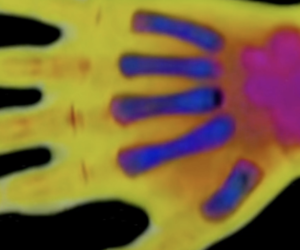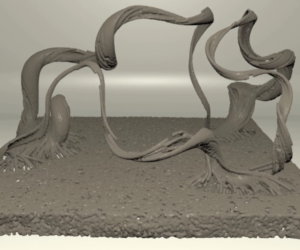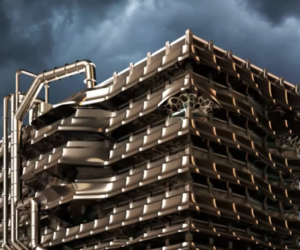Circularity presented by RMIT, Polestar and Green Magazine – The Parasite
“Circularity: Materials + Form” will run from June 27-29th in Fitzroy, Melbourne, showcasing projects from the RMIT Master of Architecture Design Studio and Research Elective
The Parasite from RMIT Architecture on Vimeo.
As we explore the role of aluminium in architectural design, we must first consider its extraction, origins, and the processes involved. We need to examine the environmental impacts of producing aluminium components, such as window frames and studs, for construction.
Australia is the world leader in the production of alumina and aluminium. Recycled aluminium uses 90% less carbon. Aluminium production accounts for over 3% of global electricity consumption. Aluminium gets transported by trains, boats and aircraft using substantial amounts of carbon to the largest overseas consumer, China, accounting for more than 40% of global consumption.
The 60 Collins Street building investigates a localised factory within an office building and foregrounds the ‘messy’ processes of carbon emissions within the building, isolating these functions that exist on the fringes of cities or remote locations that are unseen to the general population.
Perhaps we would make different decisions about waste and the effects of pollution if we could clearly see its impacts on us. Do we need to make sacrifices within the work environment and our own comfort so we can reduce the carbon footprint? What impacts does that have on the environment?
Let’s take a look at the possibility of this hypothesis …
VANESSA BATRAS


